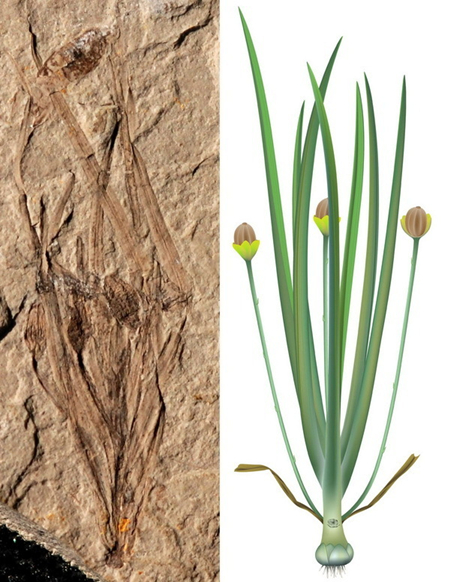Fossil of world's earliest herbaceous angiosperm plant found
 0 Comment(s)
0 Comment(s) Print
Print E-mail People's Daiy Online, March 10, 2016
E-mail People's Daiy Online, March 10, 2016
 |
|
Fossil of the herbaceous angiosperm plant from the mid-Jurassic period (left), recovery plan for the herbaceous angiosperm plant (right). [File Photo] |
Paleobotanists have found fossils of the world's earliest herbaceous angiosperm plant from the mid-Jurassic period (more than 164 million years ago) in northern China's Inner Mongolia.
Less than 4 centimeters tall, the fossil’s root, stem, leaves and fruit are well preserved. It was found near the southeast corner of Inner Mongolia by Professor Han Gang of the Paleontological Center of Bohai University in Liaoning Province.
The finding was published in the latest English edition of Acta Geologica Sinica, an academic journal owned by the Geological Society of China.
"The occurrence of fructifications implies that the plant is already mature," Han said.
"The small size of this mature plant indicates that Juraherba is a herbaceous seed plant, most likely an angiosperm. The seeds enclosed in the fructifications further confirm angiospermous affinity."
It could be the earliest record of herbaceous seed plants as well as of herbaceous angiosperms.
"Most Western botanists believe that angiosperms originated in the early Cretaceous period (about 125 million years ago), but the discovery of Juraherba bodae moves that date back 40 million years," Han said.





